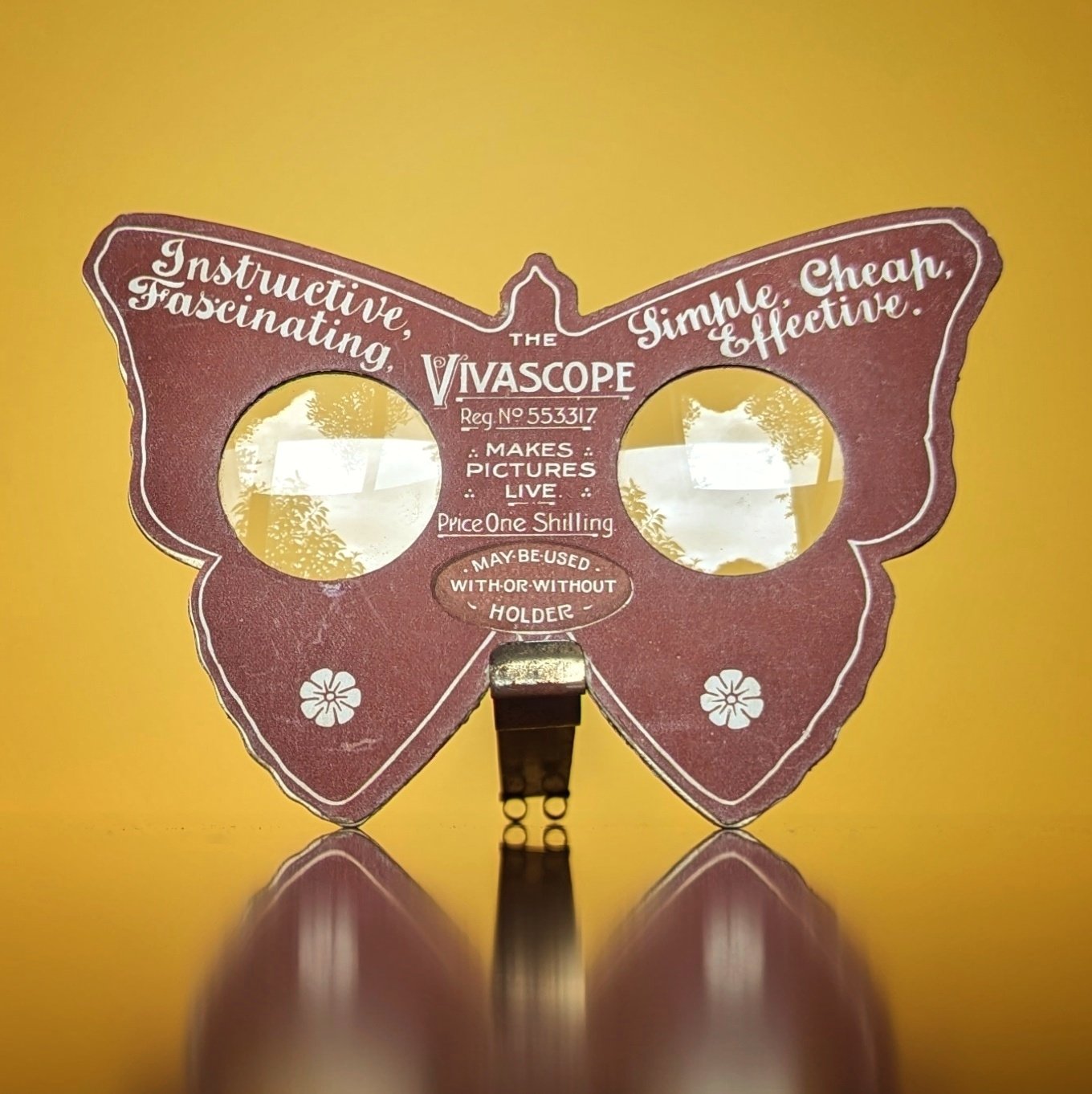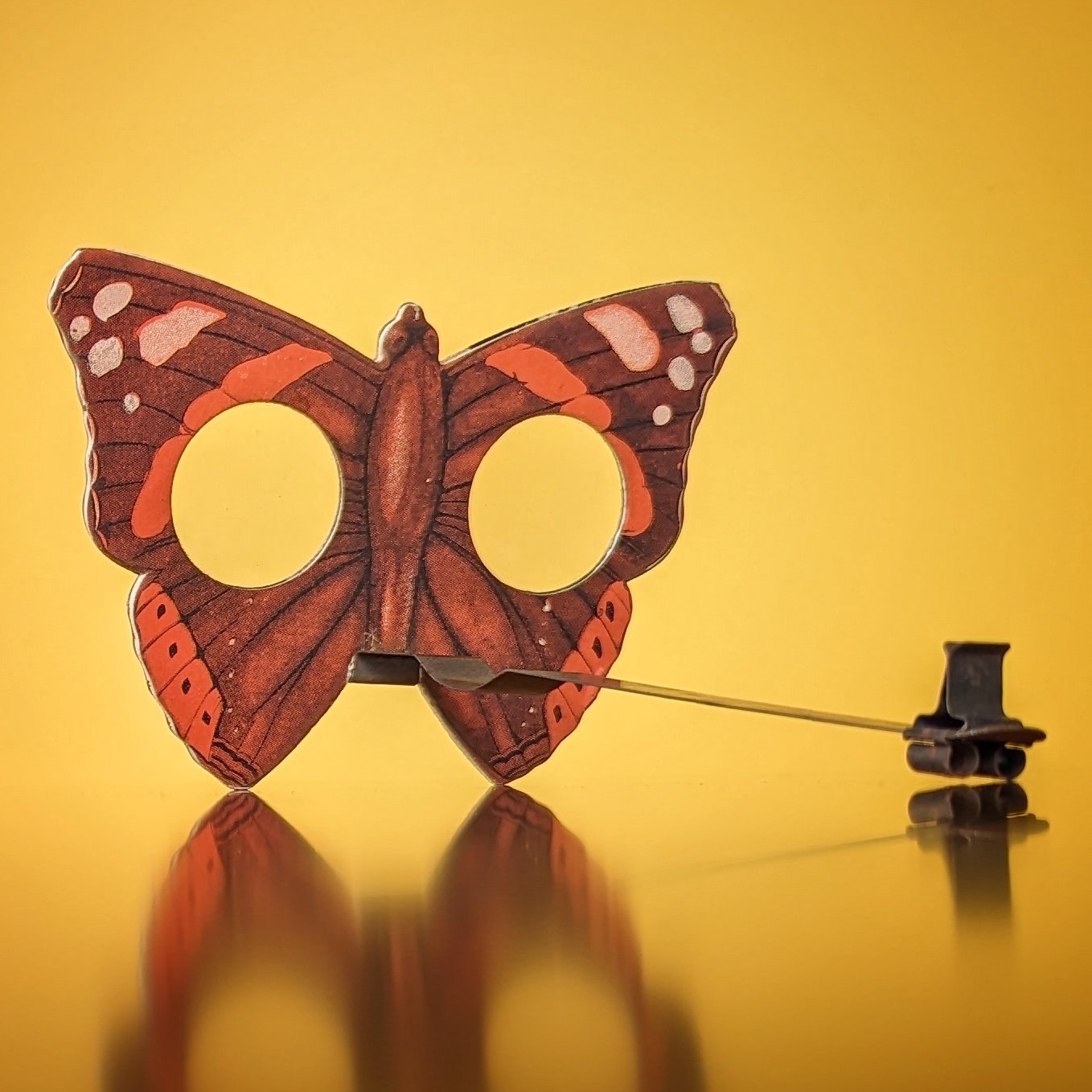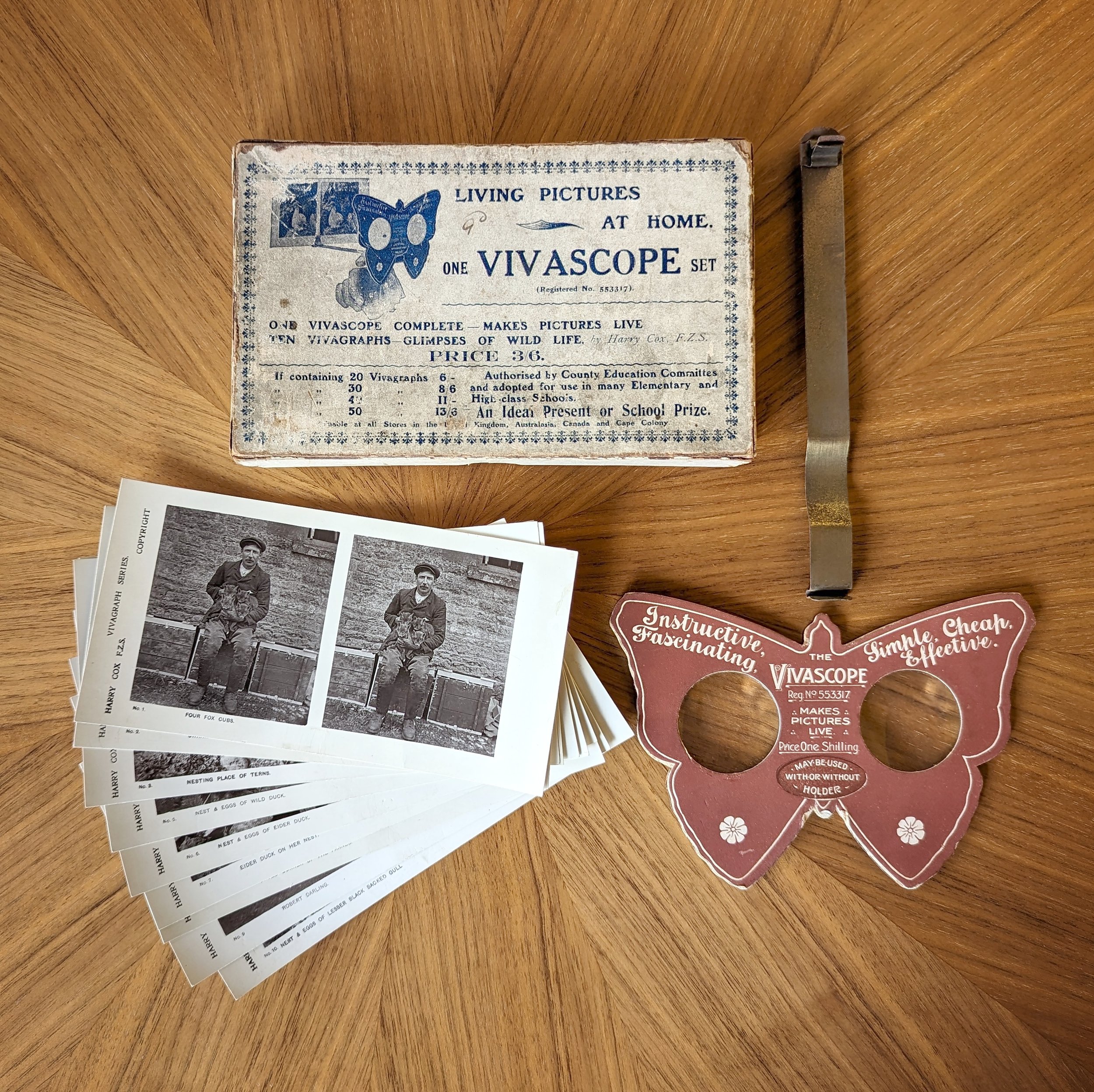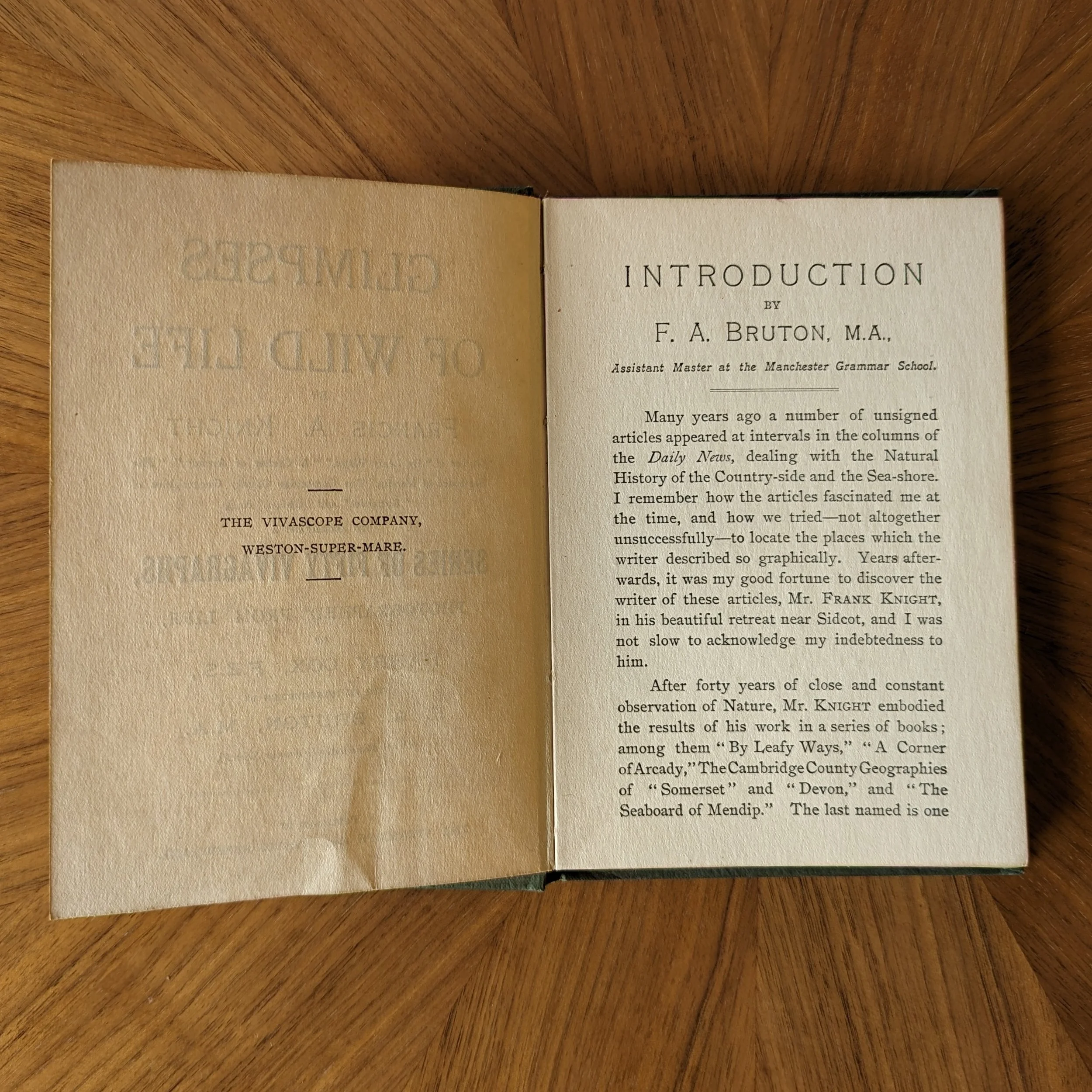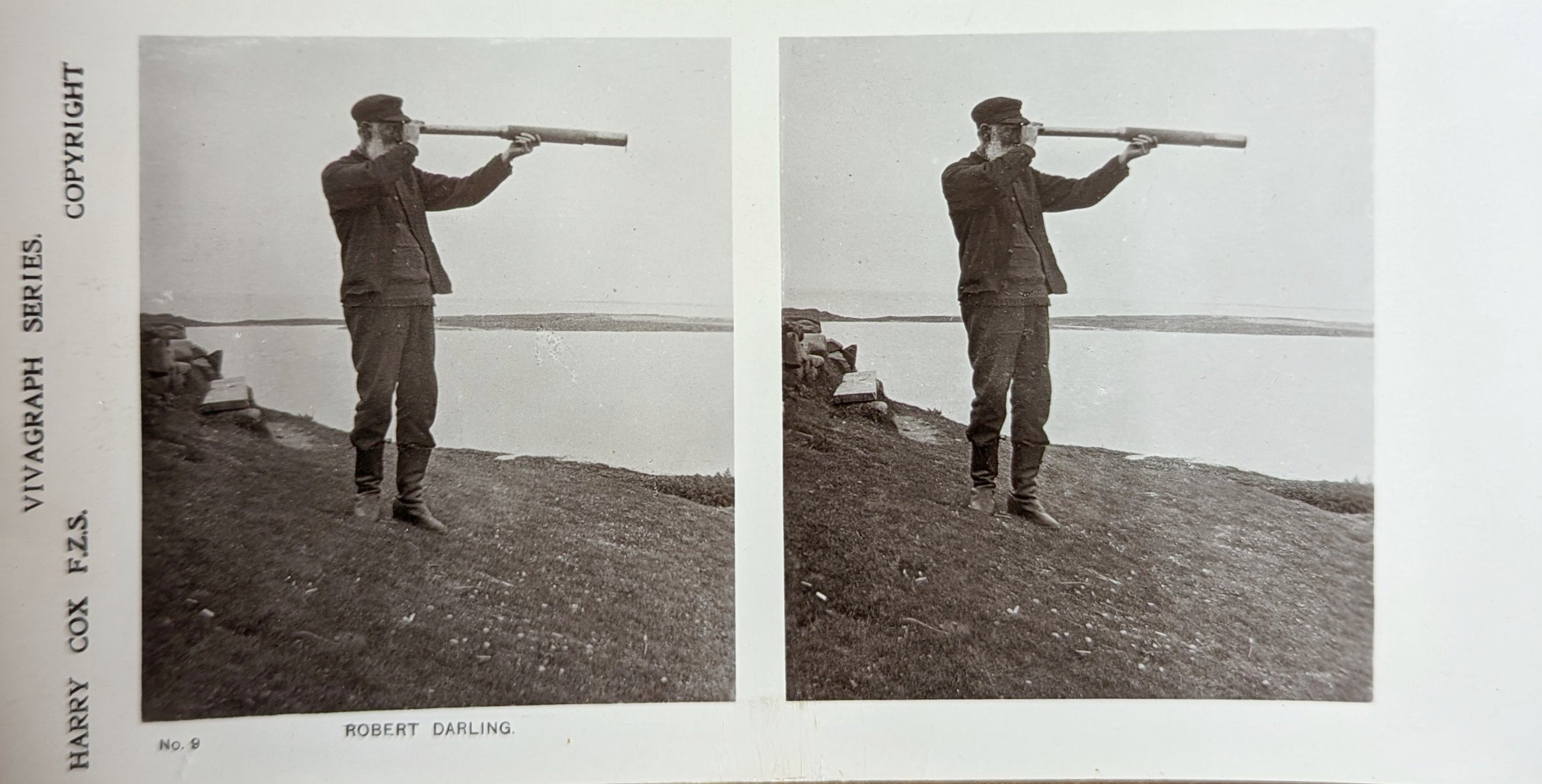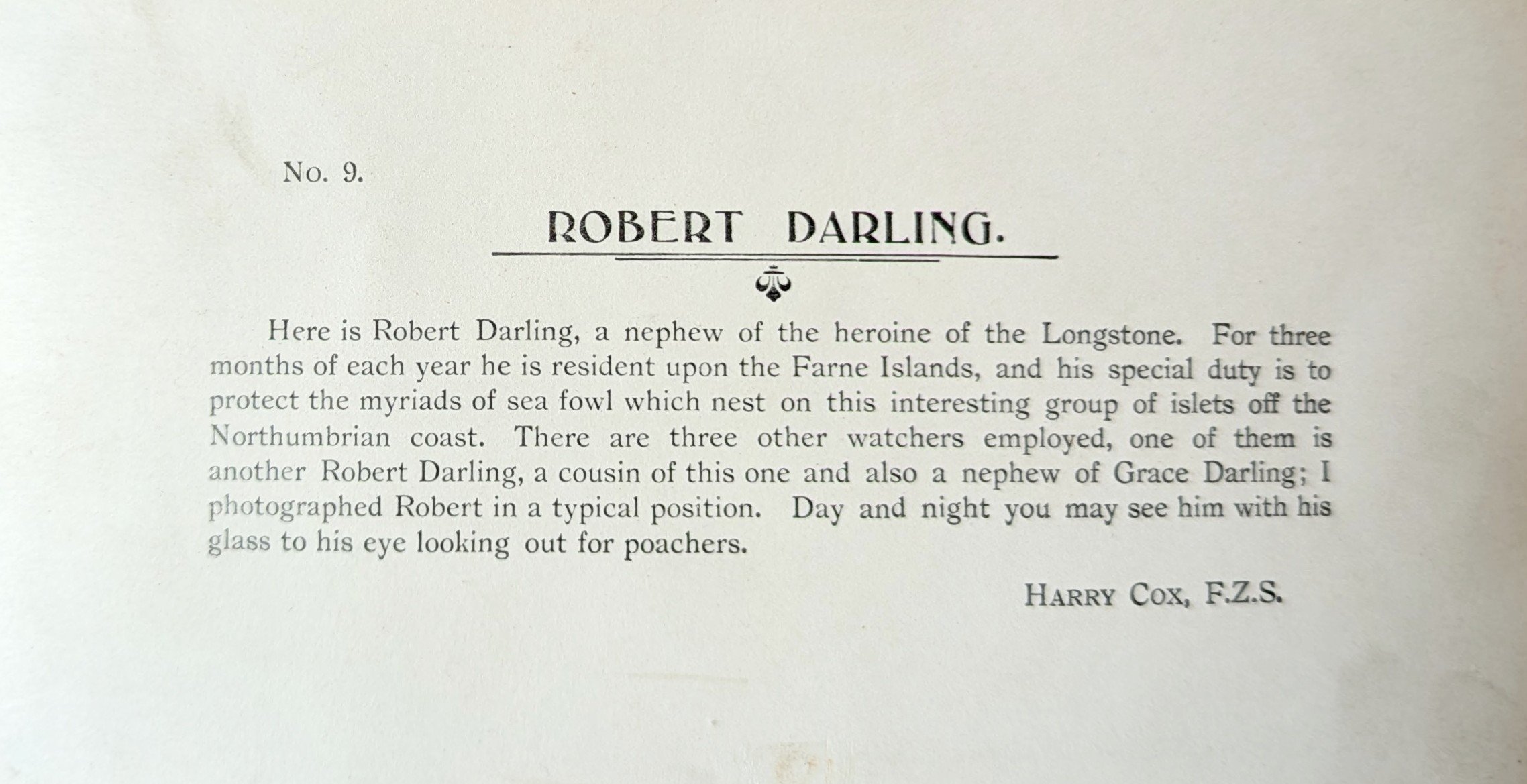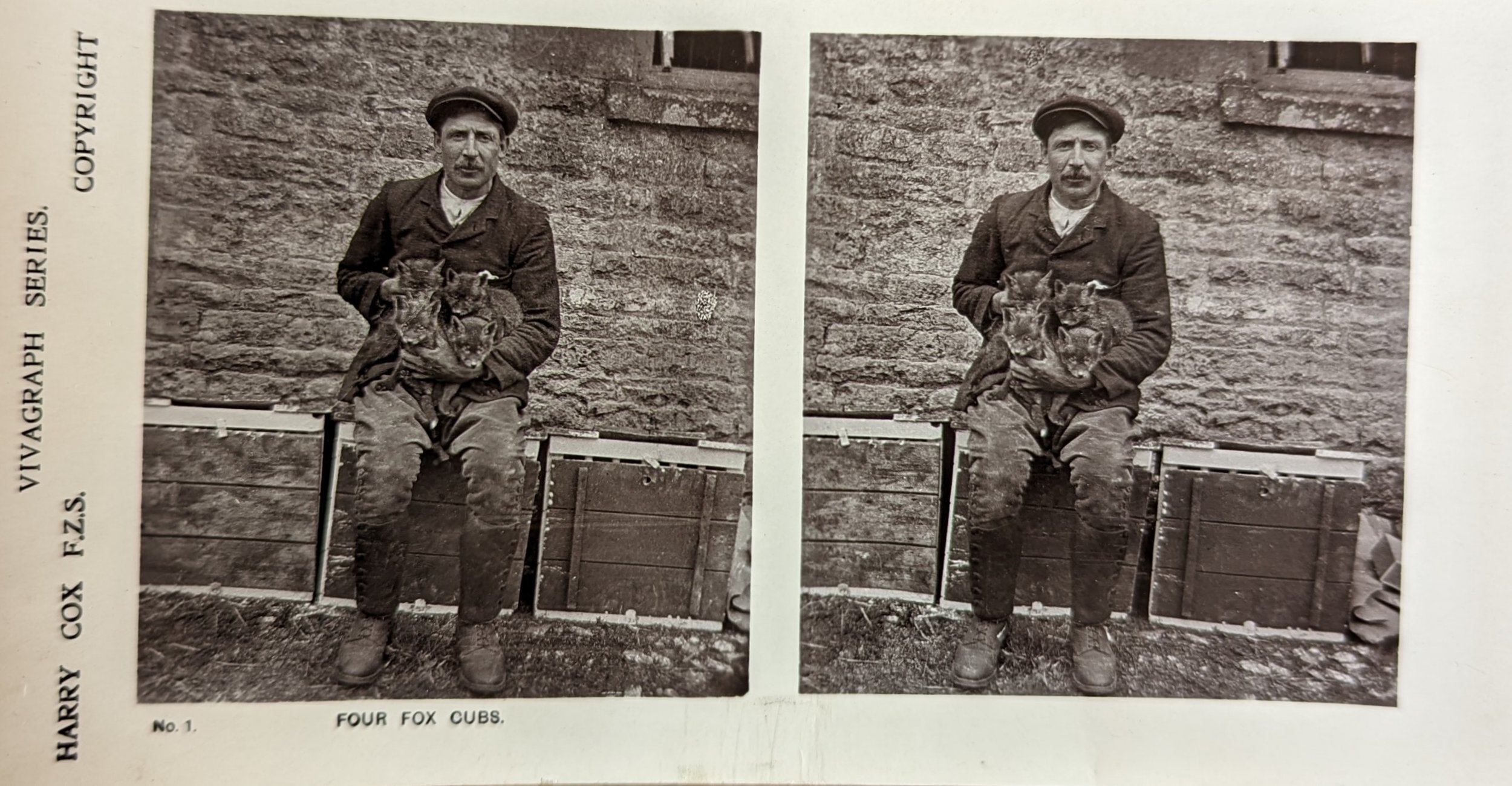Vivascope Stereoscope | Vivagraphs
England, 1910s
We’re delighted to have both the Vivascope home and educational sets, along with the rare “butterfly” stereoscope, in our collection. The Vivascope and the accompanying stereoviews called Vivagraphs were the idea of Harry Cox, one of the best-known naturalists in Weston-super-Mare during the early 1900s. Harry credited brothers Richard and Cherry Kearton with exposing him to natural history photography. The Keartons were among the world’s earliest wildlife photographers, with Cherry’s 1892 of a bird’s nest with eggs being recognized as the first of its kind. Some of Richard Kearton’s stereoviews are included in the educational set shown below.
Cox liked to take photos of nests and eggs as those were less familiar to people and easier to photograph. He also shot many bird photos that required patience and risk-taking, especially for the sea-birds out on the cliffs. Besides being a nature photographer and lecturer, Harry Cox was a Fellow of the Zoological Society (F.Z.S.), warden and guardian of Brean Down, lessee and caretaker of the island Steep Holm, fought in the army during the first World War, broadcast for the BBC often, had a nature feature in a national newspaper, wrote numerous nature articles for magazines and, in 1940, he was appointed as a coastguard for Steep Holm.
Cox took most of his stereo photos with a stereoscopic Kodak Brownie. He turned many of them into magic lantern slides and became an in-demand lecturer. He’d talk through 50 slides in a lecture called “Glimpses of Wild Life.” He delivered one of these lectures to the Photographic Society of London on December 30, 1913. Later, in 1915, he gave that same title to the handbook that accompanied his educational Vivascope set. The book is written by author Francis A. Knight with an introduction by author and teacher Francis Archibald Bruton. The book, bundled with 50 Vivagraphs and a viewer, was issued by Messrs. Virtue & Co. The Vivascope set became very popular in schools. Home Vivascope sets were also made available without the book and with smaller sets of Vivagraphs.
